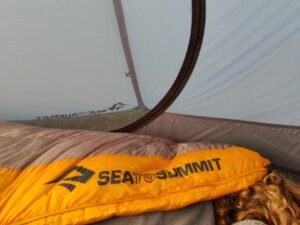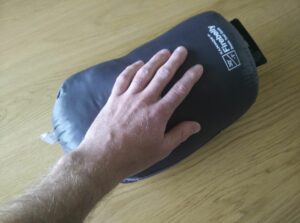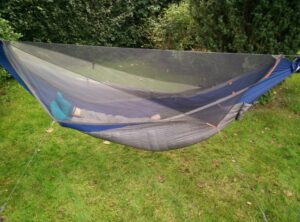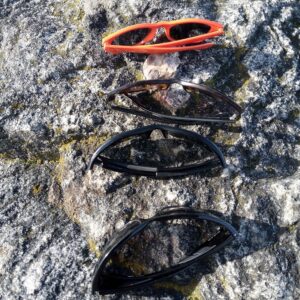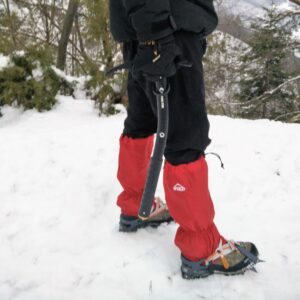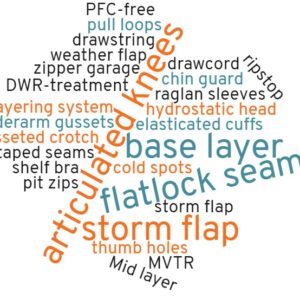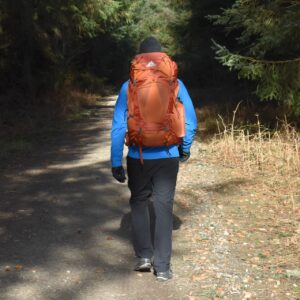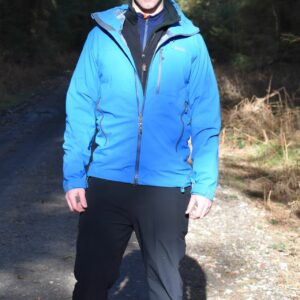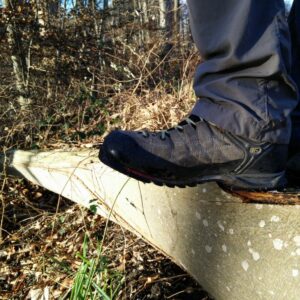Over the last few years, the popularity of sleeping bags has significantly decreased as many backpackers started using quilts instead. Quilts are basically lightweight insulated blankets and there is no doubt, that they’re great. They are very comfortable, lightweight and easy to fit in the backpack because they pack very small. However, sleeping bags do have certain advantages over quilts. I have both a quilt and a sleeping bag at home (Kammok Firebelly Trail Quilt and Sea to Summit Spark 28F). I decide which one to bring with me when I go backpacking based on the weather forecast and the conditions on the trail. Sometimes it makes more sense to bring the quilt and in some situations the sleeping bag is a better option. Here I’ll explain the differences between quilts and sleeping bags to help you choose the best sleeping gear for your next backpacking trip.
Table of Contents:
Weight
Quilts are generally lighter than sleeping bags because they don’t have insulation on the underside. Therefore, they require less insulation overall and the insulation is the heavy thing in sleeping bags and quilts. Quilts also don’t have a zipper, hood or a draft collar which makes them even lighter compared to sleeping bags.
It’s important to note that when we compare weight, we mean quilts and sleeping bags with the same temperature rating and insulation type. A quilt with 750-fill-power down and temperature rating of 30° F will most likely be heavier than a sleeping bag with 900-fill-power down and the same temperature rating. That’s because more grams of insulation will be required to reach that temperature rating. Fill power tells how much space one ounce of down occupies. The higher the number, the better the quality and consequently the warmer the insulation.
Packability
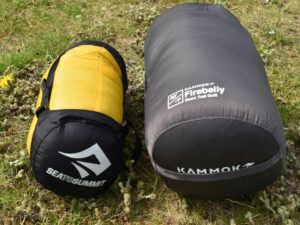
Quilts in general pack smaller than sleeping bags but not always. Left is the Sea to Summit Spark sleeping bag and right is the Kammok Firebelly quilt
Quilts generally pack smaller. However, this again only applies when we’re comparing quilts and sleeping bags with the same temperature rating and insulation type. For example, my Sea to Summit Spark 28° F sleeping bag packs smaller than my Kammok Firebelly 30° F quilt. The Firebelly quilt has insulation with lower fill power than the Spark sleeping bag (750 compared to 850) and thus takes more space.
The Spark sleeping bag also comes with an amazing stuff sack with compression straps which allows you to compress it really small. Stuff sacks without compression straps kind of inflate when you put a sleeping bag or a quilt in. However, then you can compress it in the backpack by squeezing it between other items. Nevertheless, compression straps on stuff suck are indeed a much better solution.
Warmth
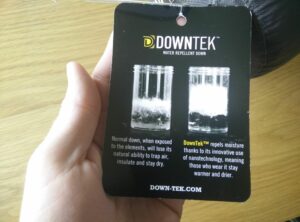
Both can have top-notch insulation but sleeping bags are warmer because they snugly enclose your body
In terms of warmth sleeping bags are a clear winner. A sleeping bag will always be warmer than a quilt with the same insulation type. That’s because sleeping bags snugly enclose your body and there is simply less chance of cold air protruding inside. Sleeping bags are also ergonomically shaped to provide the best possible insulation and equipped with hoods and draft collars. Some quilts feature drawcords at the head and foot which is a really good feature. These drawcords enable you to make the quilt fit snugly around your neck and feet for increased overall warmth.
Quilts usually have down insulation, although there are exceptions. For example, quilts with synthetic Climashield Apex insulation from Enlightened Equipment. Sleeping bags come with either synthetic or down insulation. Synthetic insulation is a good choice if you’re often backpacking in humid conditions since it retains warmth even if it gets wet. In all other conditions down insulation is superior.
Versatility
Quilts are much more versatile than sleeping bags. A quilt can be used as a blanket on warm days and as a sleeping bag in cold conditions. It can also be partially opened which is not always the case with a sleeping bag. For example, it might be hard to put the legs out and keep the torso covered when using a sleeping bag. Quilts are especially popular among backpackers who use hammocks. They are superior to sleeping bags when it comes to backpacking with a hammock. That’s because it’s really hard to get into a sleeping bag when you’re in a hammock. Furthermore, a quilt can also be used as hammock underquilt which acts as a substitute for a sleeping pad.
Sleeping comfort
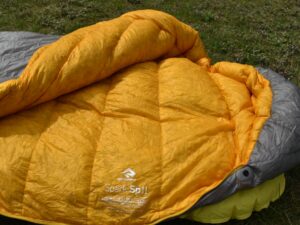
Sleeping bags provide better comfort in cold conditions but in all other conditions quilts are more comfortable
This depends a lot on personal preferences, but quilts do offer more freedom of movement and provide better ventilation. Therefore, they are a great option for people who like to move around and adjust their sleeping position regularly during the night. However, in cold weather a sleeping bag might be more comfortable because you won’t have to keep it tucked around your body. The sleeping bag will snugly enclose your body when you zip it up.
Both quilts and sleeping bags can provide good sleeping comfort but what’s better at the end depends on personal preferences and conditions on trail. Before deciding what to buy ask yourself in which season and conditions you conduct most outings.
Price
Quilts and sleeping bags come in a wide range of prices. Nevertheless, quilts tend to be a bit cheaper than sleeping bags on average because they require less components (zipper, hood etc.) and insulation. However, the price difference is not that big. You might save 10 – 20 percent if you opt for a quilt instead of a sleeping bag with the same temperature rating and insulation type. So, it for sure doesn’t make sense to buy a quilt only to save money.
Conclusion
So, should you buy a sleeping bag or a quilt? Ultimately, the choice between a sleeping bag and a quilt depends on personal preferences and conditions you’re expecting to encounter on trails. While sleeping bags provide better insulation and sleeping comfort in very cold conditions, quilts offer greater versatility, lighter weight, more freedom of movement and are also cheaper. So, if you’re mostly backpacking in nice and warm weather a quilt is the obvious choice. However, if you’re planning to use the item for backpacking in winter or mountaineering, you should probably go for a sleeping bag instead.
I’d love to hear about your thoughts on sleeping bags and quilts. Write them in the comments section below.
